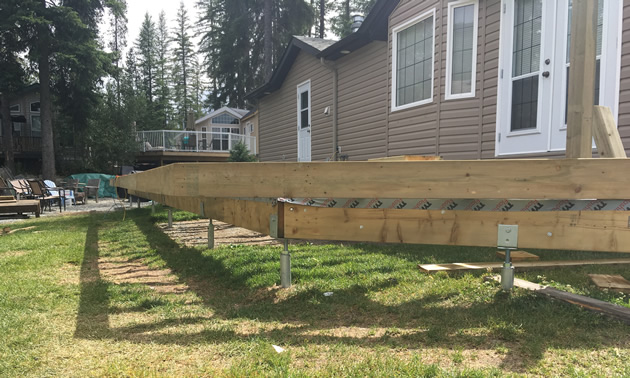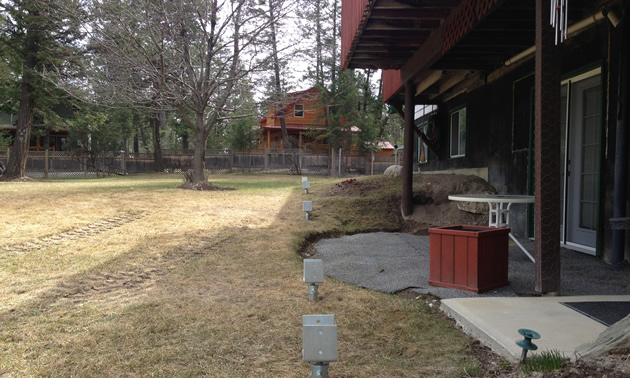Postech Foundations for southern Kootenays
Helical pile technology is tried and true, and finally here

Helical piles support this sturdy fence. — Photo courtesy Postech Foundations
Helical piles, also called screw piles, have been used in the construction industry for more than a century, though not so much in the Kootenay region. However, with the industry’s increased concern for reduced environmental impact, efficiency and affordability, helical piles are becoming an increasingly popular option. Postech Foundations, certified installers of helical piles, now has an office in Moyie, B.C. Franchise owner Rod Gallinger is happy to bring this established-though-little-known construction technology to the southern Kootenay region.
When they were developed back in the 19th century, helical piles were mainly used to support lighthouses, bridges and other structures that had to be built on unstable terrain. Their reputation for speed of installation, durability and minimal environmental impact, as well as the fact that they can be removed and re-used, are factors in their favour.
Gallinger, who bought the Postech franchise almost two years ago, is a big fan of this construction technology.

This pier is supported by helical piles. — Photo courtesy Postech Foundations
“We’re slowly getting people convinced that this is a good product,” he said. “It’s a no-brainer to me compared to sonotubes. I did a bunch of research before I bought into Postech, and everything they do meets the National Building Codes. They’ve done their homework and they have engineers on staff, so they test and prove out everything they do to make sure it adheres to today’s standards.”
In the beginning, Gallinger had to educate the people in the RDEK bylaw offices about screw piles. “They’re getting more comfortable with the idea now,” he said, “and are even starting to recommend me to the odd homeowner, which is nice.”
Gallinger’s work is verified by an engineer who puts a stamp of approval on his projects. The pipes and the tubing meet National Building Code standards, and a letter of compliance is provided to homeowners certifying that Postech’s work has been done correctly, and confirming the load-bearing capacity of the screw piles.
“I also have an excavating company, Gally Equipment Services,” Gallinger said, “and I will dig sonotubes for people, but I strongly advise them to use screw piles. The bigger builders in town agree that screw piles are cost effective. They’re on par with sonotubes and they’re way quicker.”
Gallinger has a lineup of work ahead where he will be installing helical piles in various communities, and, he said, “I’m really interested in any big solar farm projects that might be coming to the Kootenays. Each pedestal needs a footing, and screw piles are ideal for that—it would be a dream project for me.”

Helical piles are often used in building renovations and expansions. — Photo courtesy Postech Foundations






Comments